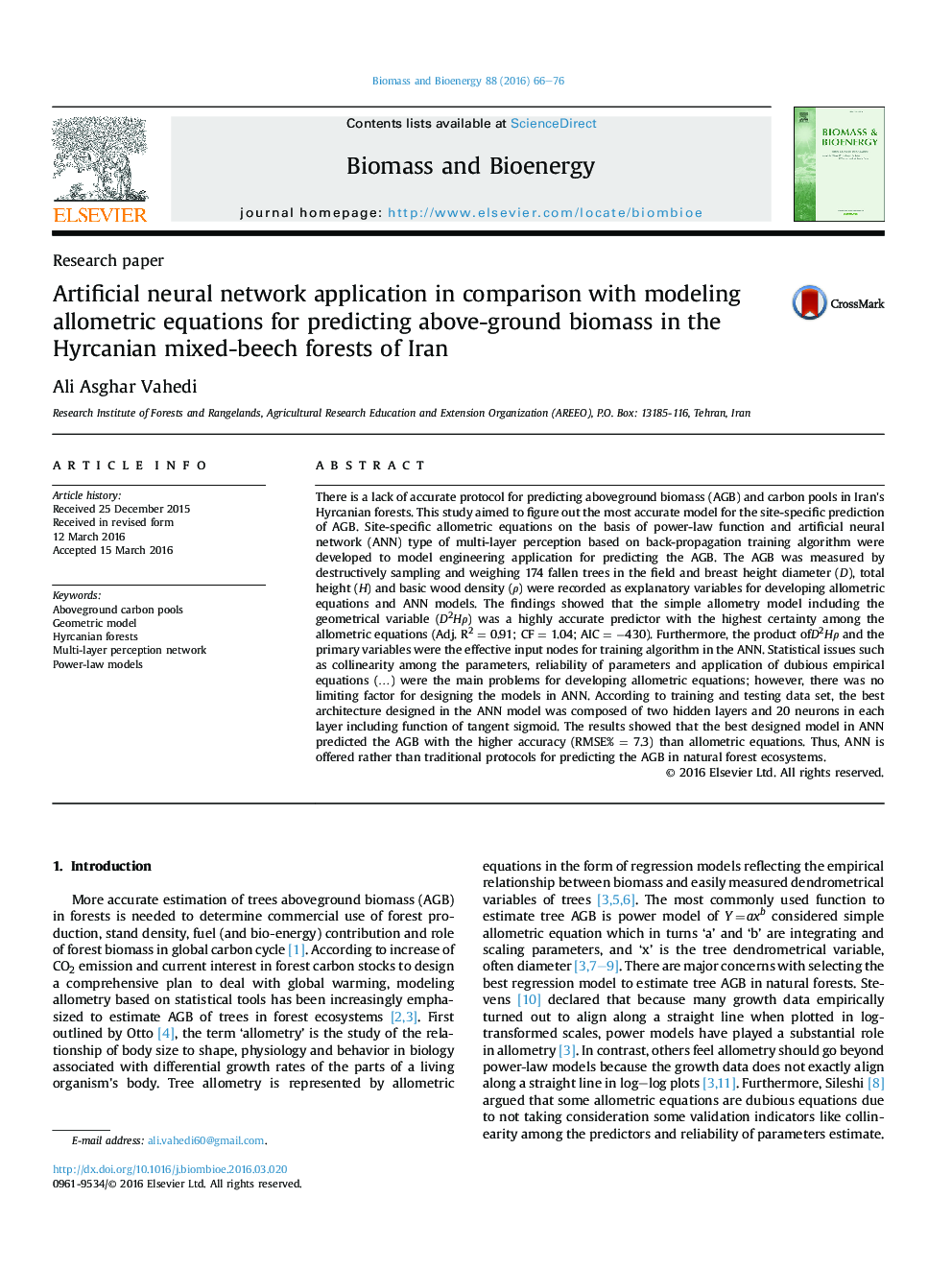| Article ID | Journal | Published Year | Pages | File Type |
|---|---|---|---|---|
| 7063339 | Biomass and Bioenergy | 2016 | 11 Pages |
Abstract
There is a lack of accurate protocol for predicting aboveground biomass (AGB) and carbon pools in Iran's Hyrcanian forests. This study aimed to figure out the most accurate model for the site-specific prediction of AGB. Site-specific allometric equations on the basis of power-law function and artificial neural network (ANN) type of multi-layer perception based on back-propagation training algorithm were developed to model engineering application for predicting the AGB. The AGB was measured by destructively sampling and weighing 174 fallen trees in the field and breast height diameter (D), total height (H) and basic wood density (Ï) were recorded as explanatory variables for developing allometric equations and ANN models. The findings showed that the simple allometry model including the geometrical variable (D2HÏ) was a highly accurate predictor with the highest certainty among the allometric equations (Adj. R2 = 0.91; CF = 1.04; AIC = â430). Furthermore, the product ofD2HÏ and the primary variables were the effective input nodes for training algorithm in the ANN. Statistical issues such as collinearity among the parameters, reliability of parameters and application of dubious empirical equations (â¦) were the main problems for developing allometric equations; however, there was no limiting factor for designing the models in ANN. According to training and testing data set, the best architecture designed in the ANN model was composed of two hidden layers and 20 neurons in each layer including function of tangent sigmoid. The results showed that the best designed model in ANN predicted the AGB with the higher accuracy (RMSE% = 7.3) than allometric equations. Thus, ANN is offered rather than traditional protocols for predicting the AGB in natural forest ecosystems.
Keywords
Related Topics
Physical Sciences and Engineering
Chemical Engineering
Process Chemistry and Technology
Authors
Ali Asghar Vahedi,
